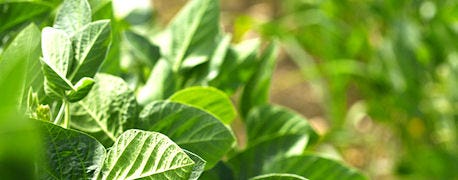
Neonicotinoid pesticides add billions of dollars to the North American economy, a new study prepared by research firm AgInfomatics and commissioned by the Growing Matters consortium has found.
The AgInfomatics study evaluated seed treatment, soil and foliar uses of neonicotinoid insecticides in the United States and Canada. Research included commodity crops such as corn, soybeans, wheat, cotton, sorghum and canola, specialty crops such as citrus, vegetables and grapes, plus turf, ornamental and landscape uses.
The research also explores implications if these products were no longer available, such as expanded reliance on older classes of insecticides.

AgInfomatics study evaluates seed treatments, soil and foliar uses of neonics in the U.S.; adds to expanding information on pesticide class
The study found that more foliar sprays of broad-spectrum insecticides would be used in place of targeted seed or soil treatments if neonicotinoids were unavailable, and each pound of neonicotinoid lost could be replaced by nearly five pounds of older insecticides across the commodity crops that were evaluated.
Related: Federal Report Cites Several Factors For Bee Decline
According Growing Matters, the consequences of this change would result in reduced crop yield and quality, disrupted pest management practices impacting beneficial insects including honey bees and, in some cases, damage due to a lack of suitable alternatives to manage invasive pests.
EPA's take
The study follows an Oct. 15 review of neonicotinoid seed treatments on soybeans from the U.S. EPA that found little value in the treatments. According to the EPA, the products provide "little or no increase in soybean yields" when compared to using no treatment.
Other groups supporting bee health have come out against neonicotinoids as the class of pesticides is under scrutiny due to an alleged link to pollinator health. Three neonics – clothianidin, imidacloprid and thiametoxam – are currently under temporary ban in the European Union to allow for more time to study effects on pollinators.
EPA noted its October review is part of a larger examination of the pesticide class with particular emphasis for its impact on pollinators.
~~~PAGE_BREAK_HERE~~~
According to AgInformatics' review of the EPA finding, as provided by Growing Matters, the EPA report "uses one measure based on limited data" and "undervalues the benefits that modern seed treatments provide to soybean growers."
Related: 'Bee-safe' Biopesticide Could Be Neonicotinoid Alternative
Part of the reason for AgInformatics' expanded review of neonicotinoid pesticides, the group said, is to "demonstrate the economic and societal benefits [neonicotinoids] bring to agriculture, including soybean production," the group told EPA.
More research ahead
For the latest AgInfomatics study, researchers surveyed over 22,000 growers, consumers and applicators in the United States and Canada, reviewed in-depth pesticide use information and conducted a meta-analysis of yield performance involving thousands of observations.
The team also conducted listening sessions in eight locations across North America to gain user insights and complement the quantitative data results, Growing Matters said.
"Although many people know intuitively that this class of chemistry is highly valued within the industry, we now have a comprehensive, science-based analysis that documents the magnitude of this value," Dr. Pete Nowak, emeritus professor at the University of Wisconsin-Madison and AgInfomatics principal, said in a press statement. "The studies were conducted with a level of rigor necessary to meet the stringent standards of peer-reviewed publications."
Related: Seed Treatments Offer Big Benefits, CropLife Report Finds
The research will be released throughout the fall and winter via a series of reports. The first reports released examine a case study of neonicotinoid use in Florida citrus, and a case study of neonicotinoid use in mid-South cotton.
Responses from farmers and agribusiness professionals in listening sessions are also available. Subsequent reports will provide a more quantitative assessment of the costs and benefits associated with neonicotinoids across agricultural, municipal, ornamental and home settings, Growing Matters said.
About the Author(s)
You May Also Like




